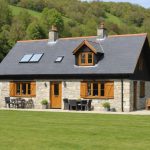Dampness in a UK semi-detached house is a common problem that can lead to a myriad of issues, including health concerns and structural damage. Preventing damp is crucial to maintaining a healthy and long-lasting home. In this article, we address the best strategies to prevent dampness, covering key topics like condensation, rising damp, and the importance of ventilation.
Understanding the Causes of Dampness
Dampness can arise from various sources, and understanding these can help you take effective measures to prevent it. Moisture can penetrate your property through several pathways, including walls, windows, and ceilings. Sometimes the moisture comes from air, and other times it comes from water rising from the ground. By identifying the source, you can better combat the issue.
Cela peut vous intéresser : How can UK homeowners integrate smart lighting systems with existing setups?
Condensation and Humidity
Condensation forms when warm, moist air comes into contact with cold surfaces such as walls, windows, and ceilings. This is especially common in UK homes during the winter months. The cold surfaces cause the moisture in the air to condense into water droplets, leading to damp patches and potentially mould growth.
Solution: Improve your home’s ventilation. Open windows every day, especially after cooking or showering, to let moist air escape. Use extractor fans in kitchens and bathrooms, and consider a dehumidifier to reduce indoor moisture levels.
Sujet a lire : What are the key considerations for building an energy-efficient conservatory in the UK?
Rising Damp
Rising damp occurs when water from the ground rises up through the walls via capillary action. This is more common in period properties where the damp proof course might be outdated or missing.
Solution: Install or upgrade a damp proof course (DPC) to block moisture from rising through the walls. Modern DPCs are usually made from plastic and are highly effective. For existing issues, consult a professional for damp proofing solutions, which may include injecting a damp-proofing cream or installing a new DPC.
Penetrating Damp
Penetrating damp happens when water penetrates through the walls due to external factors like rain or leaks. This is often caused by poor wall insulation or damaged building materials.
Solution: Ensure that your walls are well-insulated and that any cracks or holes are promptly repaired. Investing in cavity wall insulation can also help. Make sure that your property is properly weatherproofed, and consider treatments like waterproof paints or sealants.
Implementing Proper Ventilation
Proper ventilation is one of the most effective ways to prevent dampness. Good airflow reduces the moisture levels inside your home, preventing the buildup of condensation and subsequent damp issues.
Mechanical Ventilation
Mechanical ventilation systems, such as heat recovery ventilation (HRV) units, can significantly improve air quality in your home. These systems extract stale, moist air and replace it with fresh air from outside. This not only helps to control damp condensation but also improves overall living conditions.
Solution: Invest in a mechanical ventilation system suited to your home’s specifications. Regularly maintain the system to ensure it functions correctly and efficiently.
Natural Ventilation
Natural ventilation involves allowing fresh air to flow through your home by opening windows and doors. This is the simplest and most cost-effective way to reduce indoor moisture levels.
Solution: Make it a habit to regularly open windows, especially during activities that generate a lot of moisture, such as cooking, showering, or drying clothes indoors. Ensure that trickle vents in modern windows are always open.
Maintaining Wall and Window Integrity
Wall Maintenance
Your home’s walls are the first line of defence against external elements. Regular maintenance is essential to prevent penetrating damp and other related issues.
Solution: Regularly inspect your walls for cracks or damage and repair them promptly. Consider applying a waterproof coating or paint designed to repel water. For older homes, check and upgrade the damp proof course if necessary.
Window Maintenance
Windows can be a significant source of moisture entry if not properly maintained. Leaks and drafts can result in condensation and mould growth.
Solution: Ensure your windows are well-sealed and that any gaps or cracks around the frames are filled. Regularly check for signs of wear and tear on the seals and replace them if needed. Double glazing can also help to reduce condensation and improve energy efficiency.
Addressing Mould and Moisture Issues
Mould Prevention
Mould thrives in damp environments and can cause health issues, including respiratory problems and allergies. It is crucial to prevent its growth by managing moisture levels and ensuring good ventilation.
Solution: Clean any mould as soon as you spot it. Use mould-specific cleaning products and always wear protective gear. Ensure that the affected area is thoroughly dried to prevent recurrence. Regularly clean and maintain areas prone to moisture, such as bathrooms and kitchens.
Dealing with Existing Damp
If you already have a damp problem, addressing it promptly is critical to prevent further damage. Persistent damp can deteriorate walls, ceilings, and other structural elements, leading to costly repairs.
Solution: Identify the source of the damp and take immediate action to fix it. This may involve professional damp proofing treatments, repairing leaks, or improving ventilation. Regularly monitor the affected areas to ensure that the problem is fully resolved.
Preventing dampness in a UK semi-detached house requires a proactive approach. By understanding the causes of dampness, implementing proper ventilation, and maintaining the integrity of your walls and windows, you can effectively combat this common issue. Remember, good maintenance practices will help you maintain a healthy and dry home, protecting both your property and your health.
In conclusion, tackling damp issues head-on, keeping your home well-ventilated, and ensuring regular upkeep of walls and windows are critical steps to prevent dampness in your house. Adopting these practices will help you maintain a property that stands the test of time and remains a safe, pleasant place to live.











